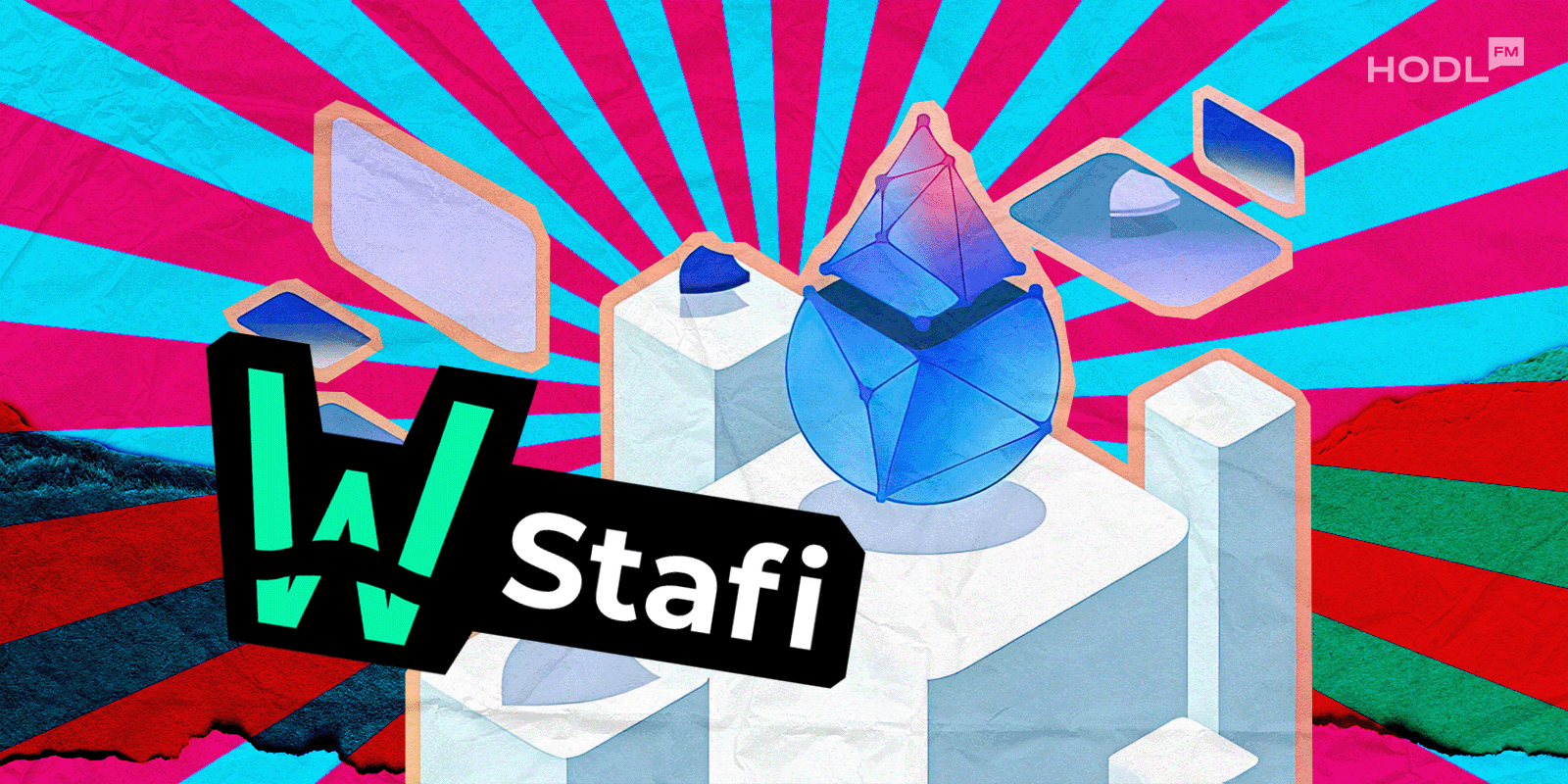Liquidity staking has become an important method for enhancing investment efficiency and participating in DeFi in today's blockchain industry. As its popularity grows, more developers are seeking to build platforms to meet this increasing demand.
Developing a liquidity staking platform requires a deep understanding of blockchain technology's core principles and the use of a range of specialized development tools. In this article, we will introduce the top 10 best tools for developers building staking products, helping you use the right tools to create an efficient, secure, and scalable platform with maximum results.
Read also: Top DeFi Protocols To Keep an Eye on in 2025
Standards for an Excellent Liquidity Staking Platform
Every developer aims for their product to be highly successful. So, what makes a liquidity staking platform excellent?
- Security: The platform must have robust security measures to protect user funds and data. Additionally, the staking and reward mechanisms should be verifiable and auditable to enhance trust.
- Sufficient Liquidity: The platform should allow users to redeem staked tokens at any time without impacting staking rewards.
- Maximized Returns: Provide optimized staking solutions to ensure users achieve the highest possible returns.
- User Experience: A simple and intuitive interface that offers real-time data and reward calculations.
- Decentralized Governance: Support community participation in decision-making to enhance transparency and credibility.
- Scalability: Compatible with multiple blockchains and assets, supporting cross-chain staking.
Steps to Develop a Liquidity Staking Product
When developing a liquidity staking product, the following are the key steps from planning to launch, with each step being crucial:
- Requirements Analysis and Planning: First, define the target users of the platform, the blockchains and asset types supported, and the core functions of the platform, such as staking, redemption, and reward distribution.
- Choosing the Tech Stack: Select the appropriate blockchain protocols and development tools, including smart contract platforms, development frameworks, and API services. Ensure the chosen technology supports the platform’s scalability and security.
- Smart Contract Development: Design and develop smart contracts to securely and efficiently handle functions such as staking, reward distribution, and token redemption.
- Backend and Data Processing: Design an efficient backend system to process user requests, manage staking data, and provide real-time information. This includes database design and API implementation.
- Frontend and User Experience Design: Develop an intuitive and user-friendly interface, ensuring that users can easily stake, view rewards, and redeem tokens. Optimizing the user experience is key to the platform's success.
- Cross-Chain Support and Compatibility: To enhance the platform's scalability, integrate cross-chain technology to support asset transfers and staking between different blockchains. If the platform is intended to operate within a single blockchain ecosystem, this step can be temporarily skipped.
- Security Audits and Compliance: Conduct multi-layered security testing, including audits for smart contracts, backend systems, and user data protection. Additionally, ensure the platform complies with relevant regulations and standards.
- Launch and Monitoring: After launching the product, continuously monitor the platform's operation to ensure efficient and stable performance. Collect user feedback and continuously improve features and user experience.
Now that we know the standards for an excellent liquidity staking platform and the key steps in development, what developer tools are necessary to achieve this? Here, we introduce the tools you’ll need.
Best Developer Tools for Building Liquidity Staking Products
LSaaS Liquidity Staking Platform Infrastructure
LSaaS (Liquid Staking as a Service) is a liquidity staking-as-a-service solution that helps developers quickly build liquidity staking products without starting from scratch. As a leading provider of PoS blockchain liquidity staking infrastructure, StaFi Protocol's LSaaS solution simplifies the development and deployment process for liquidity staking platforms. Developers no longer need to build staking infrastructure from the ground up; instead, they can leverage professional tools and services for rapid deployment.
StaFi LSaaS supports multi-chain ecosystems such as Ethereum, Solana, Polygon, Cosmos, Eigenlayer, and more, enabling developers to deploy LST (Liquidity Staking Tokens) and LRT (Liquidity Re-Staking Tokens) within weeks or even days.
The platform features fast deployment, modular design, customizable support, and multi-chain compatibility. Developers can easily adjust staking tools and reward mechanisms, and issue liquidity staking tokens (LST) or liquidity re-staking tokens (LRT) without running validator nodes. This boosts asset yields and liquidity in the DeFi ecosystem.
To experience StaFi LSaaS, join the Discord channel and submit your request.
Smart Contract Development
Smart contracts are the core of a liquidity staking platform, and developers need a secure and efficient development environment. Common tools include:
- Hardhat and Foundry: Smart contract development frameworks for EVM-compatible chains, offering support for testing, debugging, and deployment.
- Solidity: Used for writing contracts on EVM chains.
- Rust: Used for writing contracts on ecosystems like Solana.
- OpenZeppelin: Provides audited Solidity contract libraries, reducing security risks.
- By using StaFi LSaaS, developers can directly deploy its SDK and optimized modules, or customize specific feature requirements. This greatly shortens the development cycle for liquidity staking products, reducing the timeline from several months to just a few weeks or even days.
Tools to Maximize Staking Returns
Optimizing staking returns is essential for enhancing the user experience. Key tools include:
- LlamaRisk: Analyzes the risks and returns of liquidity staking assets.
- Yield Aggregators (e.g., Yearn Finance): Automatically optimizes DeFi staking returns.
- Re-staking Protocols (e.g., EigenLayer, Karak): Support re-staking to boost yield.
Validator Management Tools
Efficient validator management is crucial for liquidity staking products. The following tools simplify operations:
- SSV.Network: A decentralized validator management solution that enhances security and stability.
- Obol Network: Supports distributed validator technology (DVT) to reduce single points of failure.
- Eth2 Launchpad: An official Ethereum validator management tool, suitable for both individuals and institutions.
Blockchain API Providers
Blockchain APIs allow liquidity staking products to access real-time data. Common providers include:
- Infura, Alchemy, QuickNode: High-performance blockchain APIs that support multi-chain data access.
- The Graph: Used for indexing and querying blockchain data, optimizing frontend user experience.
- Chainlink: Provides decentralized oracle services to ensure the accuracy of on-chain data
Frontend Development Tools
The user interface of a liquidity staking platform must balance smoothness and visualization capabilities. Recommended tools include:
- React.js, Next.js: For building high-performance Web3 frontend applications.
- wagmi and RainbowKit: Optimizing EVM wallet connections and interaction experiences.
- D3.js, Chart.js: For data visualization, improving user comprehension.
Data Analysis and Monitoring Tools
Monitoring on-chain data and staking performance is crucial. Recommended tools include:
- Dune Analytics: Custom queries for blockchain data, analyzing liquidity staking performance.
- Nansen: Provides on-chain wallet tracking and user analysis.
- Tenderly: Used for smart contract monitoring, debugging, and simulating transactions.
Blockchain Testnets and Simulation Environments
Before launching on the mainnet, developers need to test contracts and applications. Common test environments include:
- Ethereum Holesky / Sepolia, Solana Devnet: Mainstream public chain testnets.
- Anvil (Foundry): Local testing for EVM smart contracts.
- Local Terra, Cosmos SDK Testnets: Simulation tests for Terra and Cosmos ecosystems.
Cross-Chain Bridges
Supporting cross-chain asset liquidity is essential. Common cross-chain bridges include:
- Axelar, LayerZero: Enable cross-chain interoperability for liquidity staking tokens.
- Wormhole, Synapse: Support multi-chain liquidity migration, enhancing asset availability.
If the platform is planned to operate within a single blockchain ecosystem, this step can be temporarily skipped.
Security Audit Tools
Ensuring the security of the liquidity staking product is the most critical step in the development process. Recommended tools include:
- Slither: A static analysis tool for Solidity smart contracts.
- Certora Prover: Formal verification of smart contract logic.
- Audit Services (e.g., Trail of Bits, OpenZeppelin Audit, Quantstamp): Professional security audits to ensure the code is free from vulnerabilities.
Why Should You Use StaFi LSaaS Services?
StaFi LSaaS services offer several key advantages for developers and project teams, making liquidity staking deployment more efficient, secure, and cost-effective. Here are the reasons to choose StaFi LSaaS:
- Save Time: Launch in weeks or even days. StaFi LSaaS significantly shortens the development cycle compared to building from scratch, enabling rapid market entry with minimal effort.
- Safe and Reliable: Use tested and audited code. StaFi LSaaS offers secure and stable solutions, eliminating the need for developers to write and audit code from scratch, saving costs and reducing risks.
- Market-Proven Reliability: StaFi LSaaS is widely adopted and recognized. Using a proven tech stack ensures stability and reduces security vulnerabilities.
- Seamlessly Integrate into the DeFi Ecosystem: StaFi LSaaS is compatible with LSTFi, enabling easy integration into DeFi, enhancing yield potential and market appeal.
- Developer Toolkit: Accelerate development. StaFi LSaaS provides a comprehensive toolkit with modules and interfaces that allow easy customization and faster deployment.
- Customizable: StaFi LSaaS offers strong customization support, enabling modular design and cross-chain compatibility to meet diverse market and technical needs.
By using StaFi LSaaS, developers can save time, reduce costs, ensure security, and quickly deploy efficient and secure liquidity staking solutions. StaFi LSaaS helps enhance market competitiveness and provides comprehensive support for development needs.
How Much Does It Cost to Develop a Liquidity Staking Product?
The development cost of a liquidity staking product depends on the development approach, required features, on-chain deployment costs, and security audit needs. The estimated cost ranges are as follows:
Costs for Self-Development (Building from Scratch)
Costs for Using StaFi LSaaS
- Cost Range: Starting from $10,000, depending on customization needs, integration plans, and partnership models. Whether for a small startup or a large DeFi platform, solutions can be adjusted based on specific requirements.
- Lower Costs: Reduced smart contract development, validator management, and deployment costs, cutting technical investment by 80% or more.
- Flexible Cooperation Models: StaFi Protocol is actively seeking co-marketing resource sharing, grants programs, and other collaborations. Qualified teams can receive significant discounts or special incentives.
Interested in exploring collaboration opportunities? Contact StaFi Protocol now to start a new chapter in liquidity staking!
How Long Does It Take to Develop a Liquidity Staking Product?
The development timeline depends on the development approach and team experience. The typical phases are as follows:
- If work with StaFi LSaaS:
StaFi LSaaS provides a standard toolkit that makes liquidity staking integration easier. The service is widely adopted, decentralized, and highly secure, ensuring developers can quickly get started. By using StaFi LSaaS, developers can significantly shorten the development cycle for liquidity staking products, reducing it from several months to just a few weeks or even days, greatly improving efficiency and enabling faster time-to-market.
StaFi LSaaS vs. Full Self-Development
Conclusion
As a leading Liquidity Staking-as-a-Service (LSaaS) solution, StaFi LSaaS significantly shortens development cycles, lowers technical barriers, and offers market-validated security and multi-chain compatibility. Compared to full self-development, StaFi LSaaS enables developers to deploy LST and LRT within hours to weeks, reducing costs by over 80% and speeding up product launches.
In the future, StaFi Protocol will introduce AI-powered solutions and launch the Open Stack Platform and Open Modularity Platform to accelerate LSaaS ecosystem expansion and promote modular construction and intelligent development of liquidity staking products.
Whether you are a DeFi protocol, exchange, wallet development team, or PoS chain project, StaFi LSaaS can help you quickly and securely build staking products. If you want to speed up your launch, contact StaFi Protocol now to start a new chapter in liquidity staking!
For more information, join StaFi Protocol’s social media channels:
- X:@StaFi_Protocol
- Telegram Group: StaFi Group
- Telegram Announcement Channel: StaFi Announcements
- Discord: StaFi Discord Server
- Medium: StaFi Blog
- GitHub: StaFi GitHub Repository
- Forum: StaFi DAO Forum

Disclaimer: All materials on this site are for informational purposes only. None of the material should be interpreted as investment advice. Please note that despite the nature of much of the material created and hosted on this website, HODL FM is not a financial reference resource and the opinions of authors and other contributors are their own and should not be taken as financial advice. If you require advice of this sort, HODL FM strongly recommends contacting a qualified industry professional.




